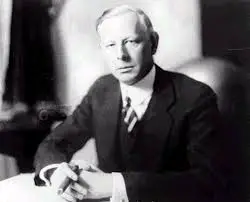
Eighty-five years ago, on Thursday, November 28, 1940, Jesse Lauriston Livermore entered the Sherry Netherland Hotel, where he took a seat near the bar and enjoyed a couple of old-fashioneds. After an hour, Jesse Livermore got up and went into the cloakroom, seated himself on a stool, and then shot himself in the head with a .32 Colt automatic. How could the man who is still regarded by many as the greatest trader who ever lived go out this way by taking his own life? It just doesn’t match the rest of his life.
In his youth, Jesse was known as the “Boy Plunger” because he looked younger than his years and he would take big positions when he traded against the bucket shops of his day. The bucket shops let traders bet on a stock price, but no trade was executed; the house covered if you were right. How good was he? He was banned from the bucket shops one by one; it was like getting kicked out of a casino because you beat the house so badly with outsized gains.
He went on to trade in stocks and commodities and did very well, becoming a millionaire many times. Unfortunately, he also went bust many times. He made his biggest money in the market crashes of 1907 and 1929. It is said that J.P. Morgan himself sent word asking for Jesse to please quit shorting stocks. In 1929, the day of one of the biggest market meltdowns, he returned home and his wife was scared that he had lost everything. He surprised her by making the biggest money of his trading career. He ended up with the nickname “The Great Bear of Wall Street” because of his shorting activity.
Here are some of his most insightful quotes from his book “How to Trade in Stocks”:
“All through time, people have basically acted and re-acted the same way in the market as a result of: greed, fear, ignorance, and hope – that is why the numerical formations and patterns recur on a constant basis.”
“Successful traders always follow the line of least resistance – follow the trend – the trend is your friend.”
“Wall Street never changes, the pockets change, the stocks change, but Wall Street never changes, because human nature never changes.”
“Just because a stock is selling at a high price does not mean it won’t go higher.”
“But careful timing is essential…impatience is costly.”
“Markets are never wrong – opinions often are.”
“Remember too that it is dangerous to start spreading out all over the market. By this I mean, do not have an interest in too many stocks at one time. It is much easier to watch a few than many. I made that mistake years ago and it cost me money.”
In the book “Jesse Livermore: World’s Greatest Stock Trader,” it is said that he loved women and that this led to the eventual divorce from his first wife. His second marriage was to a woman with a very bad history with men. Did this cause his eventual depression and suicide? He rode a roller coaster of extreme wealth and being broke many times in his life; did this wear him out?
It is said that he was in a drawdown at the time he killed himself; did he have a hard time living up to his own legend? We will never know, but I do know the mental anguish and pain that comes from riding a wild equity curve, and I strongly suggest that all traders respect the risk of ruin.
When those ten losing trades in a row hit your trading, it is much easier to come back from a 10% drawdown when you are risking 1% of capital per trade than blowing up when you are just going all-in on every trade. A 10% risk per trade has a 100% risk of ruin in the long term for just about every trading system. I think that was Jesse’s problem: he did not manage the risk of ruin. That is how a trader of his caliber and brilliance was ruined financially so many times.
“The only area I may have differed from most speculators was when I felt I was truly right, dead right, for-damn-sure right-then I would go all the way, shoot the works.” -Jesse Livermore
Rest in Peace.